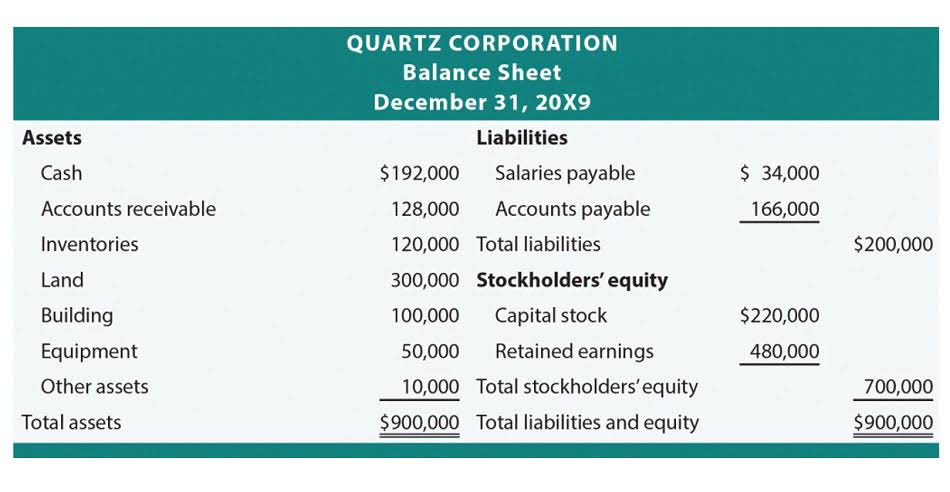
These assets are not bound by donor-imposed restrictions, allowing management the flexibility to allocate resources where they are most needed. This category includes revenues from general operations, donations without specific stipulations, and investment income. The unrestricted nature of these assets makes them particularly valuable for covering operational expenses, funding new initiatives, or addressing unexpected financial challenges. For instance, an organization might use unrestricted net assets to invest in new technology, expand its services, or cover shortfalls in other areas. The ability to freely use these funds can significantly enhance an organization’s agility and responsiveness to changing circumstances. The reclassification How to Invoice as a Freelancer process also involves updating financial statements to reflect the change in the nature of the net assets.
- Incorrect or delayed entries can lead to financial discrepancies, complicating audits and potentially undermining donor trust.
- Management should have a realistic forecast of revenues, expenses, and capital expenditures.
- It can also be used to fund new programs or initiatives that are not covered by other sources of revenue.
- For board members, the strategic allocation of unrestricted net assets is a testament to their governance and oversight capabilities.
- This act provides guidelines for the investment and expenditure of endowment funds, emphasizing the need for prudence and care in managing these assets.
Other Resources

Our expert financial professionals will ensure your unrestricted and restricted net assets are calculated accurately and properly applied to your budget, chart of accounts, financial statements, tax returns, and more. Unrestricted fund balance for nonprofit organizations refers to the portion of net assets not subject to donor-imposed restrictions. Qualitative analysis, on the other hand, involves understanding the underlying factors driving changes in net assets. This includes assessing the impact of external factors, such as economic conditions, regulatory changes, and shifts in donor behavior. For instance, an economic downturn might lead to reduced donations, affecting the organization’s net assets.
- If the money for your receivables isn’t going to be used for everyday operating costs, then subtract it from this number.
- Understanding how to handle these funds properly can make the difference between achieving an organization’s mission or facing financial difficulties.
- The definitions of the special revenue, capital projects, debt service, and permanent funds dictate that the resources within those funds represent, at a minimum, assigned portions of fund balance.
- Net assets on the balance sheet fall into several categories, including temporarily restricted, permanently restricted and unrestricted net assets.
- Net assets with donor restrictions is due to the $40,000 in cash, all of which is from a restricted grant, and the $10,000 grant receivable.
- For instance, an economic downturn might lead to reduced donations, affecting the organization’s net assets.
Temporarily Restricted Net Assets
An example might be a donation to the Red Cross for emergency aid delivered to Puerto Rico after a hurricane. Nonetheless, the ability to restrict a gift to a nonprofit organization can be a powerful incentive. Another animal-lover may want to be certain that a gift will be used only to rescue cats from kill shelters, and never for mundane administrative purposes. All of these resources are important for your organization to comply with the Generally Accepted Accounting Principles and government regulations for nonprofits.
Implications for Stakeholders
- The process begins with recognizing when the conditions tied to temporarily restricted net assets have been met.
- Unrestricted Net Assets for Operations The Unrestricted Net Assets (URNA) available to support operations are calculated by subtracting the net equity position in fixed assets from unrestricted net assets.
- Unrestricted net assets are the asset (current and/or fixed) donations made to not-for-profit organizations (NPOs).
- Timing is critical; a modest budget cut made early on can leave your organization much more viable than a drastic cut made too late.
- So, if an organization has liabilities it expects to pay off within the year, these are classified as current liabilities.
- This release from restriction represents the donor’s release of the restriction on the use of the donation and allows the nonprofit to use the funds for other programs or general operations.
Unrestricted net assets are often viewed as a measure of financial health, as they represent funds that can be used at the nonprofit’s discretion. An increase in unrestricted net assets can signal to stakeholders that the organization is in a strong financial position, capable of responding to immediate needs and opportunities. This can be particularly important for securing additional funding or attracting new donors, as it demonstrates prudent financial management and the ability to meet operational demands. When managing net assets released from restrictions, nonprofits must adhere to specific accounting practices to ensure transparency and accuracy.

Governments in this situation are likely to explain the situation, either in the notes to the financial https://power.com.pt/2020/11/11/accountants-for-musicians-specialist-musician/ statements or in management’s discussion and analysis . These donations are temporarily restricted because they have a specific purpose for which they must be used within an expected amount of time. One of the most critical is the difference between unrestricted net assets and restricted net assets. Charities and other nonprofit organizations are known best for the charitable causes they serve, but increasingly, they are using strategies and techniques borrowed from the for-profit business world. Below, you’ll learn more about this statement and how you can use it to calculate the net assets that a nonprofit holds.
Effective management of these assets also provides the board with the flexibility to support innovative projects that may not have specific funding, thereby fostering a culture of creativity and growth. Permanently restricted net assets are those that donors have stipulated must be maintained in perpetuity. Typically, these funds are invested, and only the income generated from these investments can be used, often for specific purposes outlined by the donor. This category of net assets is less flexible but provides a stable unrestricted net assets on balance sheet financial foundation for the organization.

What is the unrestricted fund balance for a nonprofit?
These conditions could include the passage of time, the completion of a project, or the achievement of a particular milestone. For example, a donor might contribute to a scholarship fund with the stipulation that the money be used within a certain academic year. Once the conditions are satisfied, the funds are “released” and can be reclassified as unrestricted net assets. Properly managing these assets ensures that donor intentions are honored and that the organization remains compliant with accounting standards. Temporarily restricted net assets are funds that donors have earmarked for specific purposes or projects, but only for a limited period. For example, a donor might specify that their contribution be used for a particular program within the next fiscal year or for a capital project that will be completed over several years.

Net assets represent assets minus any liabilities of the organization.
Ask the tough questions, know where the gaps lie and what’s being done to fund them, and have a plan for the next step if funding doesn’t come through. Timing is critical; a modest budget cut made early on can leave your organization much more viable than a drastic cut made too late. As illustrated in the previous example, the rules regarding revenue recognition are one culprit, and make it particularly difficult to review financials throughout the year.
These assets are not bound by donor-imposed restrictions, allowing the organization to allocate them where they are most needed. This flexibility is particularly valuable for covering operational costs, unexpected expenses, or new initiatives. Unrestricted funds can be generated through general donations, fundraising events, or revenue from services provided. The ability to use these funds without restriction enables nonprofits to respond swiftly to changing circumstances and opportunities, making them a vital component of financial stability. Net assets on the balance sheet fall into several categories, including temporarily restricted, permanently restricted and unrestricted net assets.
Unrestricted funds, on the other hand, are funds that do not come with any conditions or restrictions attached to them. This requires careful financial planning, budgeting, reporting, and ongoing monitoring and evaluation of the organization’s financial performance. If the noncompliance result from an NFP’s failure to maintain an appropriate composition of assets in amounts needed to comply with all donor restrictions, the amounts and circumstances shall be disclosed. The Unrestricted Fund Balance is the difference between the total fund balance and the sum of the nonspendable and restricted fund balances.

